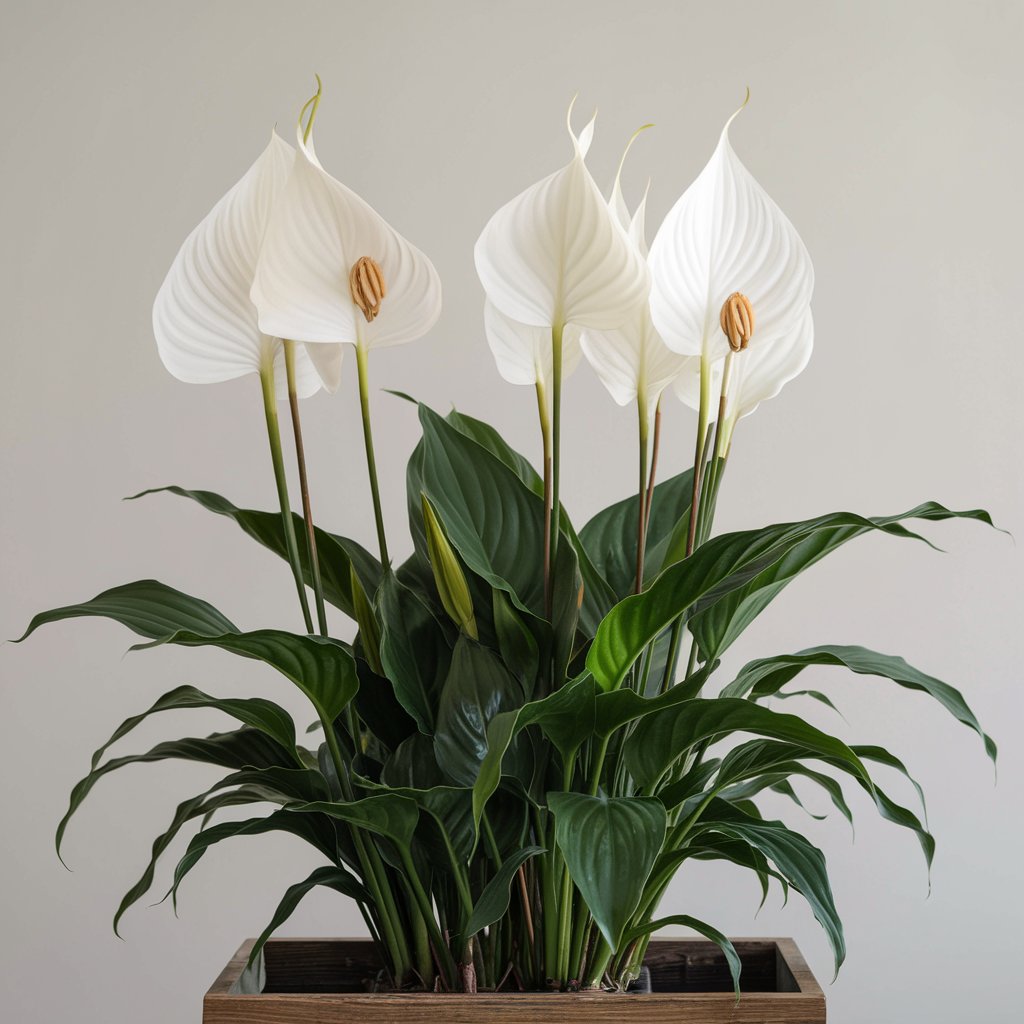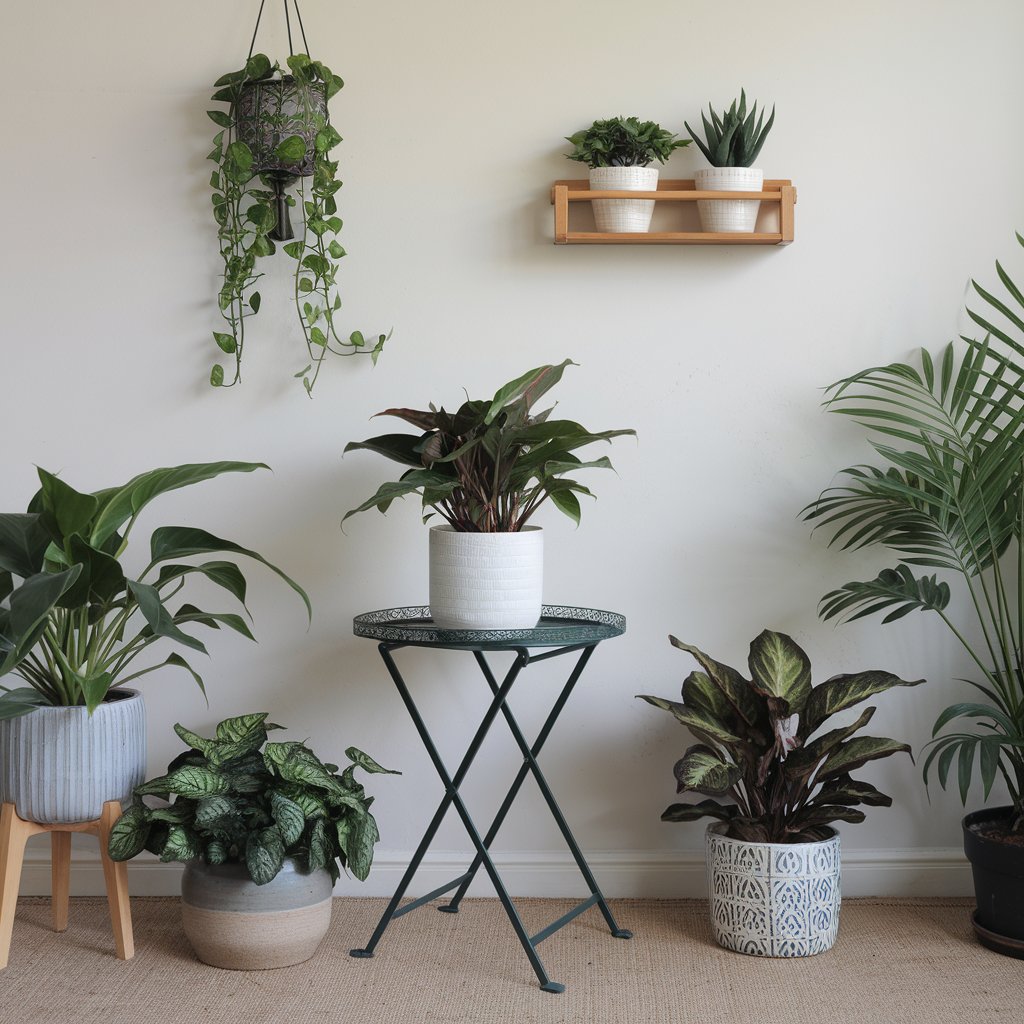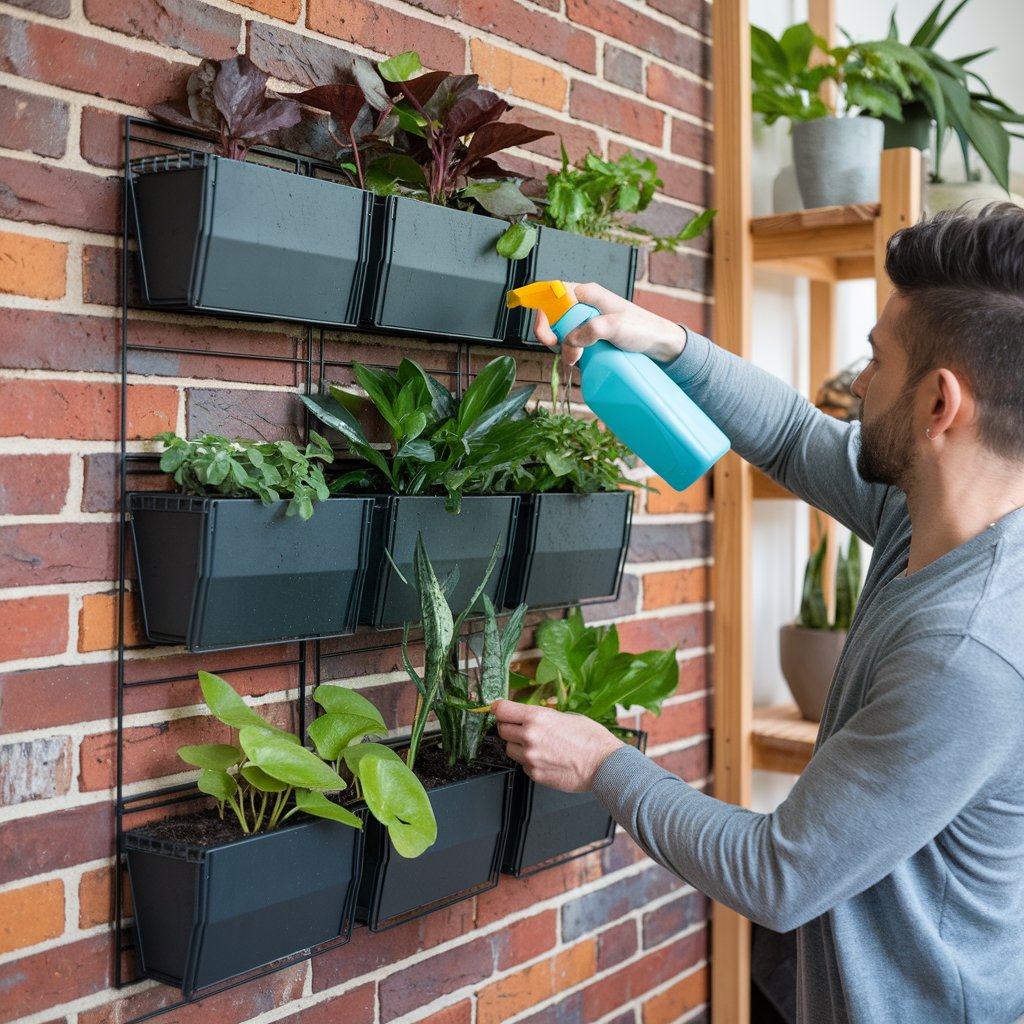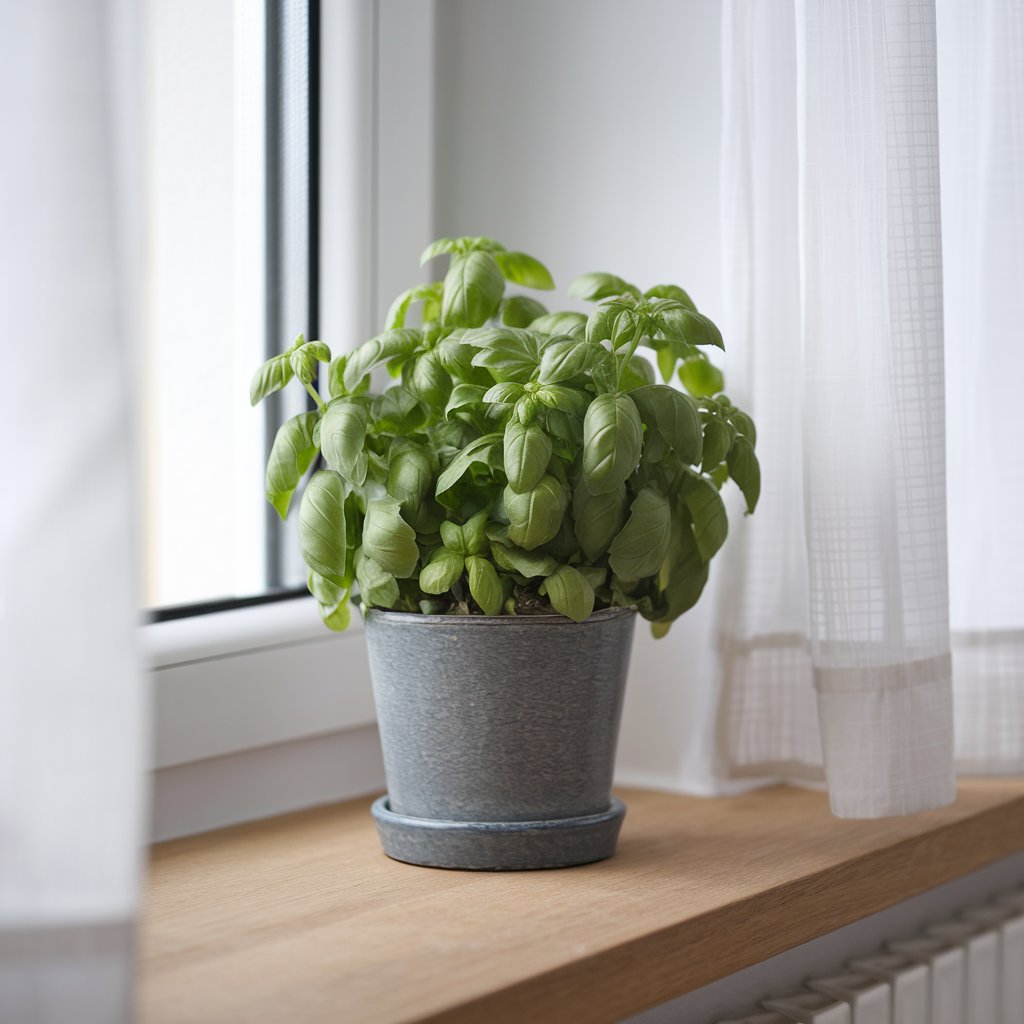The peace lily is one of the most beloved indoor plants, and for good reason. With its elegant white blooms and lush green foliage, it brings a sense of tranquility and beauty to any room. Beyond its aesthetic appeal, the peace lily plant is known for its air-purifying qualities and low-maintenance care requirements. Whether you’re a seasoned plant parent or a beginner, learning how to care for a peace lily indoors will elevate your indoor gardening skills.
In this guide, we’ll dive into everything you need to know about the peace lily, including its care requirements, symbolism, and fascinating facts. By the end, you’ll be equipped to nurture a thriving peace lily in your home.
Why Choose a Peace Lily for Your Home?
The peace lily ( spathiphyllum ) is more than just a decorative houseplant. It’s a versatile addition to your home, offering numerous benefits:
- Air Purification: According to NASA’s Clean Air Study, peace lilies can remove toxins like benzene, formaldehyde, and carbon monoxide from the air, making them a practical choice for improving indoor air quality.
- Low Maintenance: If you’re wondering, “How do I take care of a peace lily plant?” you’ll be pleased to know it’s one of the easiest indoor plants to grow.
- Symbolism: The peace lily meaning is deeply rooted in peace, healing, and hope, making it a meaningful gift or a symbolic addition to your home.
How to Care for a Peace Lily Indoors
Caring for a peace lily plant doesn’t require a green thumb. Here’s a detailed guide to help you nurture this beautiful plant:
1. Light Requirements
- Peace lilies thrive in low to medium indirect light, making them perfect for dimly lit spaces.
- Avoid direct sunlight, as it can scorch the leaves and reduce the plant’s lifespan.
2. Watering Tips
- Check the top inch of soil before watering your peace lily, and let it dry out to prevent overwatering and root issues.
- Peace lilies are known for their drooping leaves, which signal when the plant needs water—a handy feature for beginners!
3. Soil and Potting
- Use a well-draining potting mix with good aeration. A combination of peat moss, perlite, and standard potting soil works best.
- Choose a pot with proper drainage to stop water from pooling and causing root problems.
4. Temperature and Humidity
- Peace lilies thrive in temperatures between 65°F and 85°F (18°C to 29°C). Keep your peace lily away from cold drafts or direct air from vents to protect its health.
- Maintain moderate to high humidity levels. If your home is dry, mist the leaves occasionally or place a tray of water near the plant to increase humidity.
5. Fertilization
- Feed your peace lily with a balanced liquid fertilizer every 6-8 weeks during the growing season (spring and summer).
- Reduce feeding during the fall and winter when the plant enters dormancy.
Common Questions About Peace Lilies
Is Peace Lily a Monocot or Dicot?
The peace lily is a monocot. This classification is based on its single embryonic leaf (cotyledon) and parallel-veined leaves.
Is Peace Lily an Orchid?
No, the peace lily is not an orchid. While both are tropical plants with elegant flowers, the peace lily belongs to the Araceae family, while orchids are part of the Orchidaceae family.
Troubleshooting Peace Lily Care
Even with the best care, peace lilies can face challenges. Here’s how to address common issues:
Yellowing Leaves
- This could be caused by overwatering, underwatering, or nutrient deficiencies. Adjust your watering schedule and fertilize as needed.
Brown Tips
- Brown tips often result from low humidity or exposure to chemicals in tap water. Use distilled water or let tap water sit overnight before watering.
Lack of Blooms
- Lack of blooms on your peace lily might indicate it isn’t receiving adequate light. Move it to a brighter spot with indirect sunlight.
Decorative Varieties of Peace Lily
While the classic white peace lily is the most popular, other varieties offer unique aesthetics:
- Domino Peace Lily: Features variegated leaves with splashes of white.
- Sensation Peace Lily: Known for its large leaves and dramatic appearance.
The Symbolism and Meaning of Peace Lily
The peace lily meaning is deeply spiritual, representing peace, healing, and renewal. It’s often given as a sympathy gift to convey condolences and hope during difficult times. Additionally, its serene white blooms symbolize purity and innocence, making it a popular choice for weddings and celebrations.
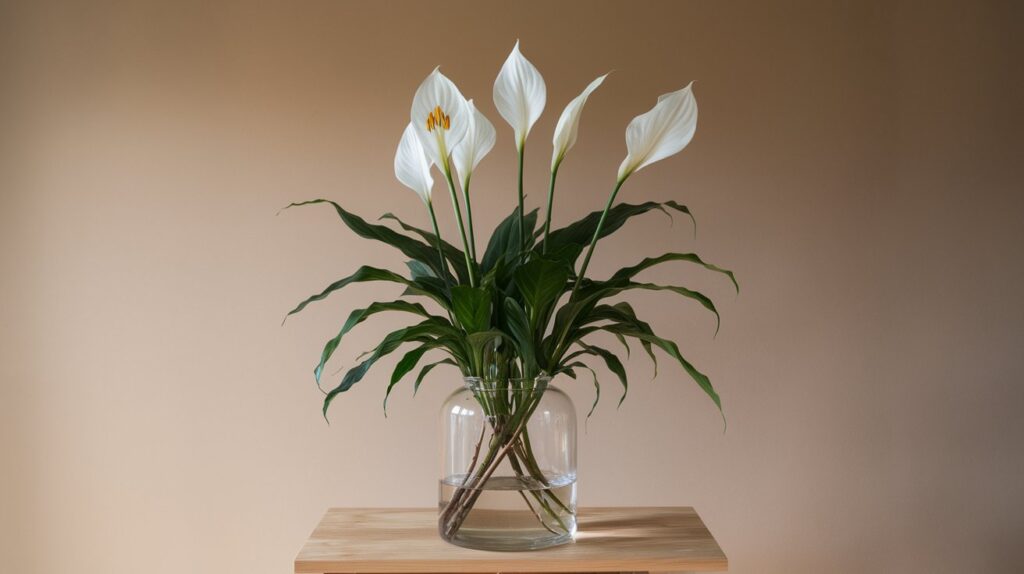
Styling Your Peace Lily Indoors
The peace lily plant is incredibly versatile when it comes to home decor. Place it in an elegant ceramic pot and let its lush foliage add a natural touch to your living room or bedroom. A peace lily bouquet can also make a stunning centerpiece for dining tables or special occasions.
Health Benefits of Peace Lilies
- Air Purification: As mentioned earlier, peace lilies improve air quality by removing harmful toxins.
- Stress Reduction: Studies show that indoor plants like peace lilies can lower stress levels and boost mood.
- Improved Sleep: Place a peace lily in your bedroom for better air quality and a calming atmosphere conducive to restful sleep.
Final Thoughts
The peace lily is more than just a plant—it’s a symbol of serenity and beauty that enhances any indoor space. Whether you’re drawn to its air-purifying qualities, its symbolic meaning, or simply its low-maintenance charm, the peace lily is an excellent choice for plant lovers of all levels.
By following the tips outlined in this guide, you’ll not only master peace lily care but also create a living space that radiates positivity and tranquility. So, go ahead and add a peace lily plant to your indoor garden—you won’t regret it!
For more tips on indoor plant care and propagation, check out Indoor gardening.

